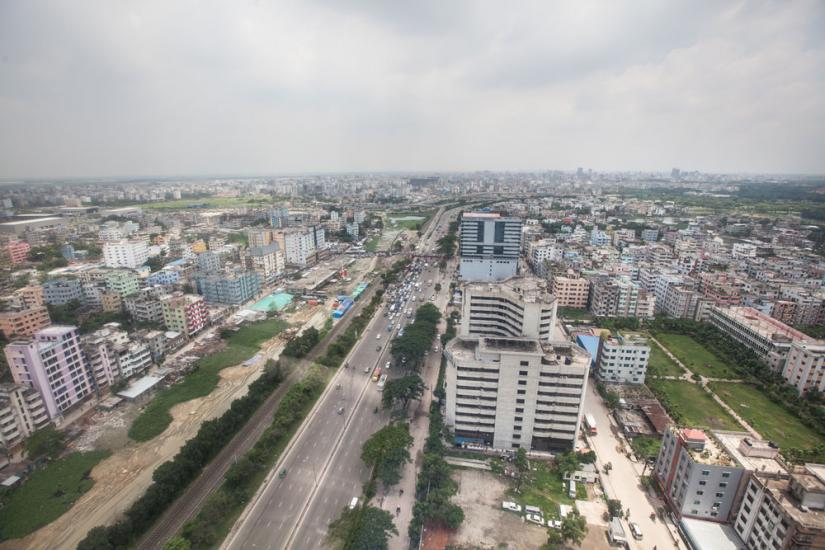 The recent fires in the capital including the fatal one at Banani’s FR Tower has brought the Bangladesh National Building code (BNBC) under fresh scrutiny, since it has not been updated in the past 12 years.
The recent fires in the capital including the fatal one at Banani’s FR Tower has brought the Bangladesh National Building code (BNBC) under fresh scrutiny, since it has not been updated in the past 12 years.
Hence the government approved a new building code immediately based on a probe report on the Banani FR Tower fire.
Back in 2006, a committee was formed to update the BNBC and it took the House Building and Research Institution (HBRI) nine long years to submit a final draft.
Although HBRI submitted the draft in 2015, the housing and public works ministry is yet to issue a gazette notification.
“After we submit the draft, it’s up to the ministry to issue it as a gazette. We have done our part,” said Abdul Wahed, Principal Research Engineer at HBRI who led the BNBC research at the institution.
The building code has provisions that a new central body, namely Bangladesh Building Regulatory Authority (BBRA), will implement and enforce building codes nationwide, instead of several local bodies.
The new code also clearly defines what constitutes a high-rise building and lists bamboo as a construction material.
Kazi Golam Nasir, Chief Architect at the Department of Architecture of the Ministry of Housing and Public Works also current convener of the Steering Committee, said that the law ministry has already vetted the draft.
“The building code is in our hands now. We will publish the updated building code in a gazette,” he said.
A battle over terms
According to a number of sources, the delay has been caused in the formation of BBRA and discrimination between diploma engineers and engineers.
Diploma engineers have diplomas and are members of the Institute of Diploma Engineers, Bangladesh (IDEB). An engineer is one who obtains a bachelor’s degree and is a member of the Institute of Engineers, Bangladesh. They both work as “supervisor, construction” according to the building code draft.
However, during high-rise building constructions, only IEB engineers are allowed as supervisors, while diploma engineers are allowed to supervise construction of 10 storey buildings only.
As a result the diploma engineers feel slighted by this regulatory distinction.
What do the stakeholders and the ministry say?
Housing and Public Works Secretary Md Shahid Ullah Khandaker said that the updated building code will be published in a gazette very soon.
“Everything has been submitted to the minister and he wants to do it as soon as possible. It took so long because we took opinions from everyone who is either an expert or has a stake in this,” he said.
“The building code has a provision for an apex body, but it’s not yet possible to describe what it will look like. Nothing is certain until the gazette is published,” he added.
Meanwhile, Md Shamsur Rahman, General Secretary of IDEB, said that the building code’s discrimination is insulting for them.
“It names us diploma engineers and those who have obtained bachelor degrees are simply engineers. They should be called degree engineers if we are called diploma engineers,” he said.
He said that they went to the prime minister and stopped the gazette from getting published in 2017.
“We do want the building code to be published immediately, but without any discrimination.”
According to the new building code:
- Bamboos are construction material
- High-rise buildings are 10 storeys and over
- Diploma engineers cannot supervise high-rise construction
- A new apex body will enforce the code nationwide
President of Institution of Engineers, Bangladesh Md Abdus Samad said that the building code is imperative for a safe and sustainable building environment.
“To ensure quality construction, everybody should be appointed according to merit, quality, education, and training background in building construction,” he said.
“I am not looking to undermine anyone, but it is true that you cannot involve people who lack the ability to do it.”
He added that with the country moving forward a separate authority is needed to properly implement the code but the code itself has to be flexible so that it can be updated as necessary.
BBRA structure
The BBRA will be the apex body to implement the building code under the Ministry of Housing and Public Works.
It will consist of five members headed by a chairman appointed for three years. The members will come from diverse but related fields like: planning, civil engineering, architecture, law, and civil service.
The government will appoint an architect or civil engineer as the chairman by the government also appoint officials to implement the building code countrywide.
What defines a high-rise building?
According to the existing building code, if a building is more than 5 stories or 20 meter high, it is considered a high-rise building. The revised building code will define high-rises as 10 stories or at least 33 meter high.
Under the new building code, buildings below 10 stories will not require a fire certificate, but high-rise buildings will have to obtain one from the Fire Service.


